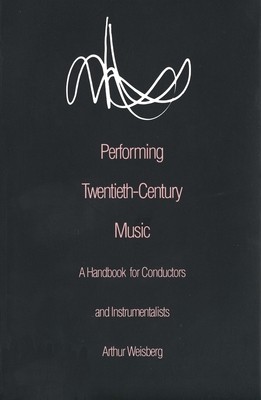
- We will send in 10–14 business days.
- Author: Arthur Weisberg
- Publisher: Yale University Press
- ISBN-10: 0300066554
- ISBN-13: 9780300066555
- Format: 15.3 x 23.2 x 1 cm, softcover
- Language: English
- SAVE -10% with code: EXTRA
Reviews
Description
Even the most accomplished musicians are often defeated by the demands of the modern repertory. Yet until now, no practical manual has addressed the performance problems specific to twentieth-century music. This concise, straightforward handbook by the renowned conductor and instrumentalist Arthur Weisberg will guide performers and conductors in negotiating the diverse paths taken by composers in this century. Most of the difficulties particular to modern music center around rhythm and counting. Performers must perfect the accurate, fluent reading of complex rhythms. Conductors must not only understand the rhythmic problems they encounter but also be able to teach the players how to perform them. Composers themselves need to know how best to notate their rhythmic ideas. Bearing these demands in mind, Weisberg clearly explains the new rhythmic complexities and provides exercises for mastering them. Weisberg demonstrates techniques--including "educated faking" and "the common sense rule"-for performing irregular meters, complex polyrhythms (such as seven against four), and metric modulations. He also discusses baton technique, score preparation, electronic aids for synchronized playing, and the tension between flow and accuracy. Weisberg's examples are drawn chiefly from works by Hindemith, Stravinsky, Webern, Ives, Carter, and Boulez, but he also uses examples from Bach, Beethoven, and Brahms to show how devices generally regarded as modern are in fact rooted in earlier practices.
EXTRA 10 % discount with code: EXTRA
The promotion ends in 17d.07:17:15
The discount code is valid when purchasing from 10 €. Discounts do not stack.
- Author: Arthur Weisberg
- Publisher: Yale University Press
- ISBN-10: 0300066554
- ISBN-13: 9780300066555
- Format: 15.3 x 23.2 x 1 cm, softcover
- Language: English English
Even the most accomplished musicians are often defeated by the demands of the modern repertory. Yet until now, no practical manual has addressed the performance problems specific to twentieth-century music. This concise, straightforward handbook by the renowned conductor and instrumentalist Arthur Weisberg will guide performers and conductors in negotiating the diverse paths taken by composers in this century. Most of the difficulties particular to modern music center around rhythm and counting. Performers must perfect the accurate, fluent reading of complex rhythms. Conductors must not only understand the rhythmic problems they encounter but also be able to teach the players how to perform them. Composers themselves need to know how best to notate their rhythmic ideas. Bearing these demands in mind, Weisberg clearly explains the new rhythmic complexities and provides exercises for mastering them. Weisberg demonstrates techniques--including "educated faking" and "the common sense rule"-for performing irregular meters, complex polyrhythms (such as seven against four), and metric modulations. He also discusses baton technique, score preparation, electronic aids for synchronized playing, and the tension between flow and accuracy. Weisberg's examples are drawn chiefly from works by Hindemith, Stravinsky, Webern, Ives, Carter, and Boulez, but he also uses examples from Bach, Beethoven, and Brahms to show how devices generally regarded as modern are in fact rooted in earlier practices.


Reviews